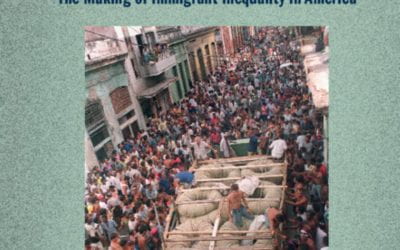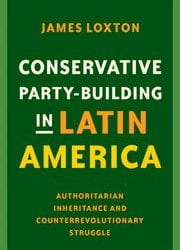Culture in Quarantine
The Challenges of an Essential Sector
During the Covid-19 pandemic, cultural institutions suffered long closures. In South American countries, these institutions will not only require greater economic solvency, but also the rescue of the link of meaning between creators, works and communities.

#MusicosDesdeCasa, “musicians from home,” was one of the virtual projects of the famous Teatro Colón in Argentina. Singers and musicians performed and recorded fragments of works from their own homes.
In Argentina and other Latin American countries, quarantines made evident the need to strengthen the cultural sector. The institutionalization of donations and patronage is not yet strong in the region, and cultural management still tends to depend on a dichotomous model, state or private. At the end of 2019, when the spread of the virus was still incipient, UNESCO determined that 2021 would be the year of the “creative economy.” The aim was to promote the association between culture and development, phenomenon that grew over the last two decades. However, in the face of the contraction of public structures and the closure of commercial activities, culture was one of the many sectors hit by quarantines.
A Virtual Giant
While smaller institutions may have been the most affected, large cultural institutions were no exception. The Teatro Colón in Buenos Aires, probably the largest cultural institution in Argentina, suspended its activities during 2020 and after opening in early 2021, on the occasion of the 100th anniversary of the birth of Argentine composer Astor Piazzolla, it had to close again due to an increase in contagions. Argentina faced a first total closure in 2020, even though the mortality rate was not at its peak then.
At the “Encuentro Iberoamericano de Teatros” in December 2020, Jorge Codicimo, institutional communication coordinator of the Teatro Colón, described the activities being carried out by the Colón as a “digital strategy” that went beyond the context of the pandemic. This strategy involves creation, innovation, experimentation and distribution. Codicimo said that social networks, allied in dissemination, do not necessarily form consumption habits: “the content on a social network maybe lasts 15 seconds, and the work of art maybe lasts three or even five hours in the theater.” Codicimo also explained that the release of content that artistic institutions practiced during the pandemic meant a critical moment for these organizations: “the social response to the health crisis was not ‘good business.’”

Another of the Teatro Colón’s projects was #CasasdeÔpera, “opera houses”, a series of videos in which artists adapted fragments of operas, recorded from their own homes.
During 2020, the communications team of the Teatro Colón led the production of “#CasasdeÔpera” and “#MúsicosDesdeCasa,” a series of contents designed for virtual platforms. Artists from orchestras, choirs and dance troupes participated in performances from their homes. These videos aimed to keep contact with the audience and to strengthen the bond of the artistic community. In this sense, the theater worked with pieces that would be seen outside the context of the theater—totally virtual, directed and performed remotely, recorded with cellphones and then hosted on the institutional website. In addition, the theater transmitted recorded works free of charge through its website and YouTube channel, and made live streamings on Facebook, Instagram and Twich.
The Discourse of Culture
In 2019, in a research project conducted at Universidad Austral, I described what I then called “discourse of culture,” a discourse in which culture happens. I was not referring to a discourse about culture, but to the symbolic exchanges that facilitate the creation, dissemination and interpretation of a work of art. In the last decade there were two major groups of metaphors or “metaphorical families” that starred in the public conversation about culture in Argentina: culture as a resourcefor the development of the country and cities, and culture as an ideal value, which underpinned social celebrations and identity and was often used for political purposes.
While both sets of figures appeared in the public discourse on culture during the Covid-19 pandemic, other metaphors and arguments also seem to have emerged in relation to the art world. Faced with the need for artists and audiences to meet again in a meaningful way, open classes, rehearsals and collective readings in various virtual modalities multiplied around the world.
Virtuality is also a real experience, but it does not replace the performance on stage, the experience of wandering through a museum or a face-to-face conversation about literature. So, we ask ourselves the question about what is the secret engine that gives meaning to artistic activity. Why do we make art? Why do we need art? Do we need it? The answer to these questions was not only given by economic or political foundations, but rather transcendental ones: even if art is not useful for anything, we still need it. We understand that there is a meaning that is reserved in creation and can help us to live.
La cultura en cuarentena
Los desafíos de un sector esencial
Por Felicitas Casillo
Durante la pandemia del Covid-19, las instituciones culturales sufrieron cierres prolongados. En los países sudamericanos se requerirá un fortalecimiento institucional que implica una mayor solvencia económica, necesaria hace décadas, pero también el rescate del vínculo de sentido entre creadores, obras y audiencias.

#MúsicosdesdeCasa fue una de los proyectos virtuales del famoso Teatro Colón de la Argentina. Cantantes y músicos interpretaron y grabaron fragmentos de obras desde sus propias casas.
En la Argentina y en otros países de Hispanoamérica, las cuarentenas hicieron evidente la necesidad de fortalecimiento del sector cultural. La institucionalización de donaciones y mecenazgo no es aún fuerte en la región, y la gestión cultural suele depender todavía de un modelo dicotómico, estatal o privado. A finales del año 2019, cuando la expansión del virus era aún incipiente, la UNESCO determinó que 2021 sería el año de la “economía creativa”. El objetivo era promover la asociación entre cultura y desarrollo, fenómeno cuya difusión creció durante las dos últimas décadas. Sin embargo, ante la contracción de las estructuras públicas y el cierre de las actividades comerciales, la cultura fue uno de los tantos sectores golpeados ante la suspensión de actividades por la pandemia del Covid-19.
El caso del Teatro Colón de Buenos Aires
Si bien posiblemente las instituciones más pequeñas hayan sido las más afectadas, las grandes instituciones culturales no fueron la excepción. El Teatro Colón de Buenos Aires, probablemente la institución cultural de más renombre de la Argentina, suspendió sus actividades durante 2020 y luego de la apertura a comienzos de 2021, con motivo de los 100 años del nacimiento del compositor argentino Astor Piazzolla, debió volver a cerrarse debido a un crecimiento de contagios en la región. La Argentina enfrentó un primer cierre total en 2020, cuando sin embargo la enfermedad no provocó la mayor cantidad de víctimas.
En el Encuentro Iberoamericano de Teatros realizado en diciembre de 2020, Jorge Codicimo, coordinador de comunicación institucional del Teatro Colón, describió las actividades que estaba realizando el Colón como una “estrategia digital” que superaba el contexto de la pandemia. Esta estrategia implica creación, innovación, experimentación y distribución. Codicimo afirmó que las redes sociales, aliadas en la difusión, no necesariamente forman hábitos de consumo: “el contenido en una red social quizás dura 15 segundos, y la obra de arte quizás dura tres o incluso cinco horas en el teatro”. Codicimo también explicaba que la liberación de contenidos que las instituciones artísticas practicaron durante la pandemia significó un momento crítico para estas organizaciones: “la respuesta social a la crisis sanitaria no fue ‘un buen negocio’”.

Otro de los proyectos del Teatro Colón fue “#CasasdeÔpera, una serie de videos en los que los artistas adaptaron fragmentos de óperas, grabados desde sus propias casas.
Durante 2020, el área de Comunicación del Teatro Colón produjo una serie de contenidos diseñados netamente para la virtualidad. Con los títulos “#CasasdeÔpera” y “#MúsicosdesdeCasa”, los artistas que forman parte de orquestas, coros y cuerpos de danza participaron de videos cuyo propósito parecía ser no perder contacto con la audiencia y reforzar el vínculo de la comunidad artística. En ese sentido, el Teatro trabajó con piezas cuya recepción sería exterior al Teatro y por primera vez totalmente virtuales, dirigidas y ejecutadas a distancia, grabadas con teléfonos celulares y alojadas luego en la web institucional. Además, el Teatro transmitió de forma gratuita obras grabadas a través de su sitio web y de YouTube, y realizó live streamings desde Facebook, Instagram y Twich.
El discurso de la cultura
En el año 2019, en una investigación realizada en la Universidad Austral, describí lo que en ese entonces llamé “discurso de la cultura”, un discurso donde la cultura sucede. No me refería a un discurso sobre la cultura, sino a los intercambios simbólicos que facilitan la creación, difusión e interpretación de una obra de arte. En la última década existieron dos grandes grupos de metáforas o “familias metafóricas” que protagonizaron la conversación pública sobre la cultura en la Argentina: la cultura como un recurso para el desarrollo del país y de las ciudades, y la cultura como un valor ideal, que apuntalaba las celebraciones sociales y la identidad de los pueblos y que a menudo era utilizado con fines políticos.
Si bien ambos grupos de figuras aparecieron en el discurso público sobre la cultura durante la pandemia del Covid-19, también parecen haber emergido otras metáforas y argumentos en relación al mundo del arte. Ante la necesidad de los artistas y de la audiencia de volver a encontrarse de forma significativa, en todo el mundo se multiplicaron las clases abiertas, ensayos y lecturas colectivas en diversas modalidades virtuales. La virtualidad es también una experiencia real, pero no reemplaza la performance sobre un escenario, la experiencia de deambular por un museo o una conversación cara a cara sobre literatura. Surge, entonces, la pregunta acerca de cuál es el motor que da sentido a la actividad artística. ¿Por qué hacemos arte? ¿Por qué necesitamos el arte? ¿Lo necesitamos? La respuesta a esas preguntas no estuvo dada –al menos no solamente− por fundamentos económicos o políticos, sino más bien trascendentales: incluso en el caso de que el arte no sirva para nada aún lo necesitamos, comprendemos que existe un sentido que se reserva en la creación y que puede ayudarnos a vivir.
Felicitas Casillo is a professor and researcher at the Universidad Austral in Argentina. Her areas of work are discourse studies and hermeneutics of culture. FCasillo@Austral.edu.ar
Felicitas Casillo es profesora e investigadora en la Universidad Austral de la Argentina. Sus áreas de trabajo son los estudios del discurso y la hermenéutica de la cultura. FCasillo@Austral.edu.ar
Related Articles
A Review of Cuban Privilege: the Making of Immigrant Inequality in America by Susan Eckstein
If anyone had any doubts that Cubans were treated exceptionally well by the United States immigration and welfare authorities, relative to other immigrant groups and even relative to …
A Review of Conservative Party-Building in Latin America: Authoritarian Inheritance and Counterrevolutionary Struggle
James Loxton’s Conservative Party-Building in Latin America: Authoritarian Inheritance and Counterrevolutionary Struggle makes very important, original contributions to the study of…
Endnote – Eyes on COVID-19
Endnote A Continuing SagaIt’s not over yet. Covid (we’ll drop the -19 going forward) is still causing deaths and serious illness in Latin America and the Caribbean, as elsewhere. One out of every four Covid deaths in the world has taken place in Latin America,...



